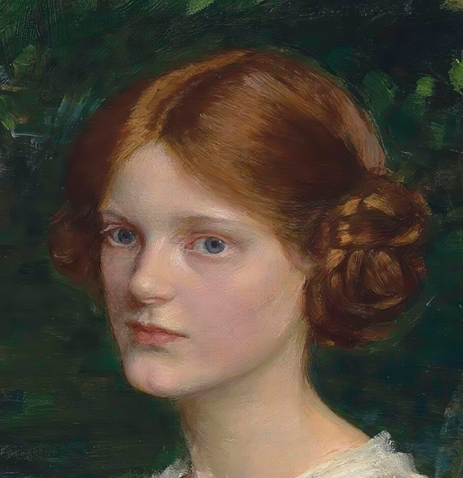Frédéric Chopin wrote 21 nocturnes for solo piano between 1827 and 1846. They are generally considered among the finest short solo works for the instrument and hold an important place in contemporary concert repertoire. Although Chopin did not invent the nocturne, he popularized and expanded on it, building on the form developed by Irish composer John Field.
By the time of Chopin's birth in 1810, John Field was already an accomplished composer. Eventually, the young Chopin became a great admirer of Field, taking some influence from the Irish composer's playing and composing technique. Chopin had composed five of his nocturnes before meeting Field for the first time. #
First shown at the Grosvenor Gallery in London in 1877, it is one of two works (the other being Nocturne in Black and Gold – The Firewheel) inspired by the Cremorne Gardens, a celebrated pleasure resort in London. One of his many works from his series of Nocturnes, it is the last of the London Nocturnes and is now widely acknowledged to be the high point of Whistler's middle period. Whistler's depiction of the industrial city park in The Falling Rocket includes a fireworks display in the foggy night sky. #

Nocturne in Black and Gold – The Falling Rocket is fundamentally composed of bleak tones, with three main colors: blue, green, and yellow. Restricted in its use of colors, the piece develops a muted yet harmonious composition. The billowing smoke gives the viewer a clear distinction between the water and the sky, where the separation blurs into a cohesive and somber space. It is this large avalanche of fog that represents the rocket of the title. Dabs of yellow enliven the artwork as exploding fireworks in the misty air. The figures watching are almost transparent, their shapes general and simplistic. To the left, the artist signs his name in a manner that has clearly been influenced by Japanese prints, with thick, straight brushstrokes that appear to imitate Japanese characters. Influenced by Japanese artists like Utagawa Hiroshige, Whistler spent years perfecting his splatter technique. Eventually he possessed the ability to make an object or person with what appeared to be nothing more than a single flick of paint. Although Whistler's critics denounced his technique as reckless or lacking artistic merit, it is notable that Whistler spent much of his time with meticulous details, often going so far as to view his work through mirrors to ensure that no deficiencies were overlooked.
In 1894, after completing the first movement of his Mallarmé triptych entitled Prélude (to "The Afternoon of a Faun"), he began the recomposition of the Twilight Scenes in a new inspired style, retitling the new version Nocturnes after a series of paintings of the same name by James Abbott McNeill Whistler, who was living in Paris at the time. #
I say I can't thank you too much for the name 'Nocturne' as a title for my moonlights! You have no idea what an irritation it proves to the critics and consequent pleasure to me—besides it is really so charming and does so poetically say all that I want to say and no more than I wish!
The Falling Rocket retains a certain degree of colour-laden luminosity that provokes spatial ambiguity set against a structure of line and form. Nocturnes were a series of paintings which, through painterly style, were evocative of differing night time scenes.
Working against contemporary inclinations for narrative (indicative of the heavy consumption of literature), Whistler can be seen arguing for painting's essential difference from literature within this work, as colour and tone trounce hints of narrative or moral allusion. Whistler's focus was on coloristic effects as a means of creating a particular sensation. More than that, a Nocturne is concerned with its depiction of space, seeking a particular sense of void that seems to arise only in the night time.
#F8B878
mellowapricot.tistory.com




